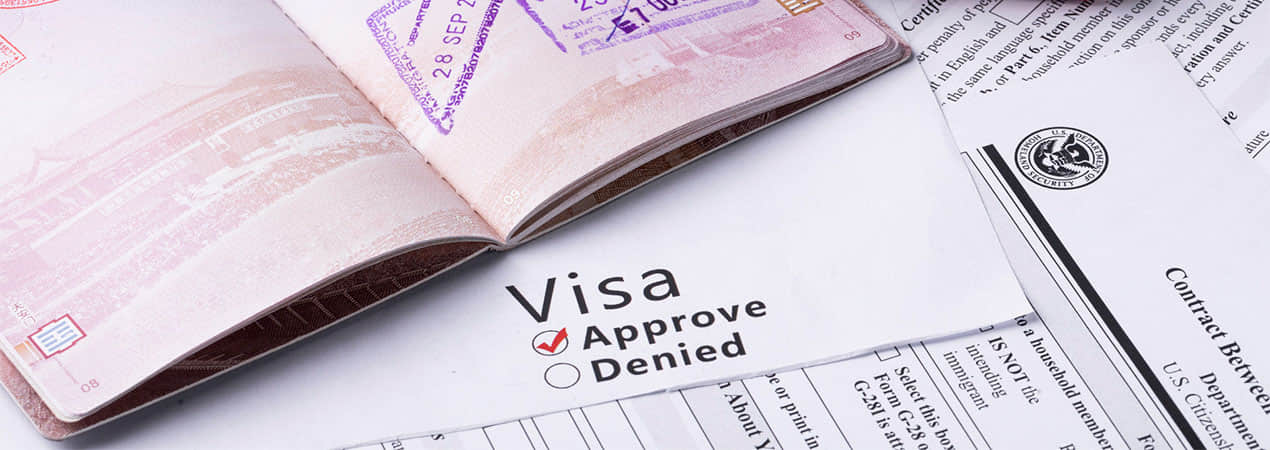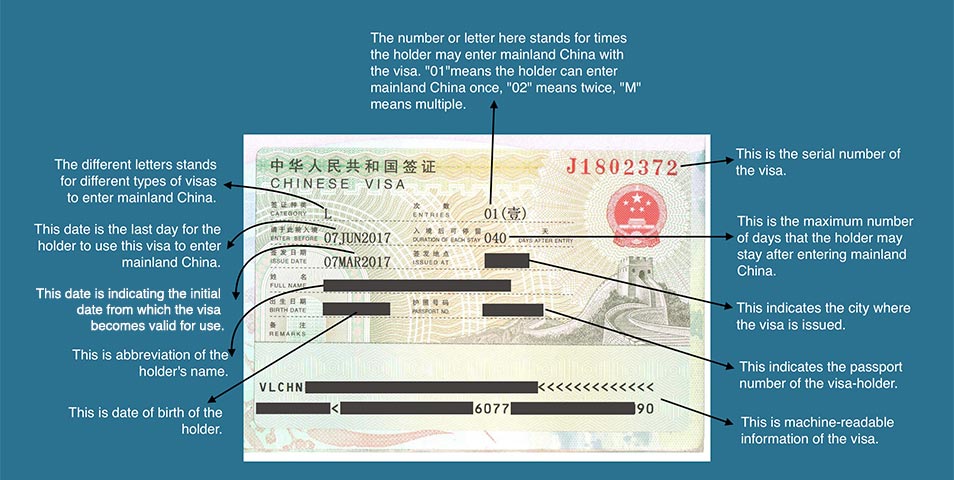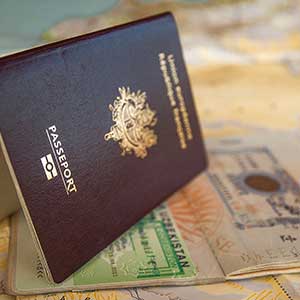China Visa & Visa Exemption Policy

One size doesn’t fit all – The most important thing to remember while reading the below information is that for China, there are different rules, restrictions, costs, and time requirements for different nationalities. This 'China Visa' article is not meant to be a comprehensive summary of every option available; instead, it will serve as a general overview giving interested visitors solid, on-the-ground tips regarding the general process and options. For specific, and up-to-date, information for your country, please check the website of the Chinese Embassy/Consulate in your country for the most accurate information.
Visa Exemption Policy
Mutual Visa Exemption & 30-Day Visa-Free Policy
| Visa-free entry to China for ordinary passport holders | |||
|
Visa-Free Update (Nov. 5, 2025): China has announced that its policy of letting citizens of 45 countries enter the country without a visa will last until December 31, 2026. The policy lets people with ordinary passports from participating countries visit China for up to 30 days without a visa for tourism, business, visiting family, or transit. The latest agreement, which goes into effect on November 10, 2025, also includes Sweden. |
|||
| Geographic Location | Country/Region | Mutual Visa Exemption | 30-Day Visa-Free |
|---|---|---|---|
| Asia | Armenia, Georgia, Kazakhstan, Qatar, Maldives, Singapore, Thailand, Uzbekistan, Malaysia | ||
| Brunei, Japan, South Korea | Valid until Dec. 31, 2026 | ||
| Africa | Mauritius, Seychelles | ||
| Americas | Antigua and Barbuda, Barbados, the Bahamas, Dominica, Ecuador, Grenada, Suriname | ||
| Brazil, Argentina, Chile, Peru, Uruguay | Valid until Dec. 31, 2026 | ||
| Europe | Albania, Belarus, Bosnia and Herzegovina, San Marino, Serbia | ||
| Andorra, Austria, Belgium, Bulgaria, Croatia, Cyprus, Denmark, Estonia, Finland, France, Greece, Germany, Hungary, Iceland, Ireland, Italy, Latvia, Liechtenstein, Luxembourg, Malta, Monaco, Montenegro, Holland, North Macedonia, Norway, Poland, Portugal, Romania, Slovakia, Slovenia, Spain, Switzerland, Russia, Sweden | Valid until Dec. 31, 2026 | ||
| Oceania | Australia, New Zealand | Valid until Dec. 31, 2026 | |
| Fiji, Tonga, Solomon Islands | |||
| Middle East | The United Arab Emirates | ||
| Saudi Arabia, Oman, Kuwait, Bahrain | Valid until Dec. 31, 2026 | ||
Transit Visa & Visa-Free Transit in China (24-hour / 240-hour)
For super short stays in China, one may look into a transit (G) visa. Currently, these are offered in 24-hour, 240-hour visa-free transit options.The locations where you can go are limited. For example, many of the transit visas only allow you to be physically located in major urban centers of Beijing, Shanghai, etc. and if you are caught outside these areas with only a transit (G) visa, you may face either fines, deportation, or short-term imprisonment. Pleading “I didn’t know” will make little difference for the vast majority of cases.
24-Hour Visa-Free Transit Policy
All open ports of entry in China implement a 24-hour visa-free transit policy for personnel from all countries around the world.
Foreign nationals holding valid passports and confirmed onward tickets for international flights, vessels, or trains transiting through China to a third country or region may stay in China for no more than 24 hours without leaving the port of entry. If they need to leave the port, they must apply to the entry and exit border inspection authority for a temporary entry permit.
240-Hour Visa-Free Transit Policy
Since Dec 17, 2024, China's transit visa-free policy got a major upgrade. The stay period for transit travelers is extended from 72/144 hours to 240 hours (10 days). New entry/exit ports are added, and the activity area is enlarged.
Currently, 60 exit-entry ports in 24 provinces, autonomous regions and municipalities implement a 240-hour visa-free transit policy for nationals of 54 countries.
The 240-hour Visa-free Transit Policy is valid for passport holders from the following countries:
European countries (40): Austria, Belgium, Czech Republic, Denmark, Estonia, Finland, France, Germany, Greece, Hungary, Iceland, Italy, Latvia, Lithuania, Luxembourg, Malta, Netherlands, Poland, Portugal, Slovakia, Slovenia, Spain, Sweden, Switzerland, Monaco, Russia, United Kingdom, Ireland, Cyprus, Bulgaria, Romania, Ukraine, Serbia, Croatia, Bosnia and Herzegovina, Montenegro, North Macedonia, Albania, Belarus, Norway.
American countries (6): United States, Canada, Brazil, Mexico, Argentina, Chile.
Oceania countries (2): Australia, New Zealand.
Asian countries (6): Indonesia, South Korea, Japan, Singapore, Brunei, United Arab Emirates, Qatar.
Travel documentation
Travelers applying for the 240-hour visa-free transit must have:
- A valid passport or travel document with at least three months validity from the arrival date.
- An interline ticket with a confirmed departure within 240 hours to a third country/region (e.g., US - Beijing - Japan or Hong Kong - US).
- A completed landing card for foreigners in transit upon arrival in China.
Travelers may be asked questions at immigration.
Ports and Area of Stay Implemented 240-hour Visa-free Transit Policy
| No. | Port | City | Area(s) of stay |
|---|---|---|---|
| 1 | Beijing Capital International Airport | Beijing | Beijing |
| 2 | Beijing Daxing International Airport | ||
| 3 | Tianjin Binhai International Airport | Tianjin | Tianjin |
| 4 | Tianjin Port (Passenger) | ||
| 5 | Shijiazhuang Zhending International Airport | Shijiazhuang | Hebei Province |
| 6 | Qinhuangdao Port (Passenger) | Qinhuangdao | |
| 7 | Shenyang Taoxin International Airport | Shenyang | Liaoning Province |
| 8 | Dalian Zhoushuizi International Airport | Dalian | |
| 9 | Dalian Port (Passenger) | ||
| 10 | Shanghai Hongqiao International Airport | Shanghai | Shanghai |
| 11 | Shanghai Pudong International Airport | ||
| 12 | Shanghai Port (Passenger) | ||
| 13 | Nanjing Lukou International Airport | Nanjing | Jiangsu Province |
| 14 | Wuxi Su'nan Shuofang International Airport | Wuxi | |
| 15 | Yangzhou Taizhou International Airport | Yangzhou | |
| 16 | Lianyungang Port (Passenger) | Lianyungang | |
| 17 | Hangzhou Xiaoshan International Airport | Hangzhou | Zhejiang Province |
| 18 | Ningbo Lishe International Airport | Ningbo | |
| 19 | Wenzhou Longwan International Airport | Wenzhou | |
| 20 | Wenzhou Port (Passenger) | ||
| 21 | Yiwu Airport | Yiwu | |
| 22 | Zhoushan Port (Passenger) | Zhoushan | |
| 23 | Hefei Xinqiao International Airport | Hefei | Anhui Province |
| 24 | Huangshan Tunxi International Airport | Huangshan | |
| 25 | Fuzhou Changle International Airport | Fuzhou | Fujian Province |
| 26 | Xiamen Gaoqi International Airport | Xiamen | |
| 27 | Quanzhou Jinjiang International Airport | Quanzhou | |
| 28 | Wuyishan Airport | Wuyishan | |
| 29 | Xiamen Port (Passenger) | Xiamen | |
| 30 | Jinan Yaoqiang International Airport | Jinan | Shandong Province |
| 31 | Qingdao Jiaodong International Airport | Qingdao | |
| 32 | Yantai Penglai International Airport | Yantai | |
| 33 | Weihai Dashuipo International Airport | Weihai | |
| 34 | Qingdao Port (Passenger) | Qingdao | |
| 35 | Zhengzhou Xinzheng International Airport | Zhengzhou | Henan Province |
| 36 | Wuhan Tianhe International Airport | Wuhan | Hubei Province |
| 37 | Changsha Huanghua International Airport | Changsha | Hunan Province |
| 38 | Zhangjiajie Hehua International Airport | Zhangjiajie | |
| 39 | Guangzhou Baiyun International Airpport | Guangzhou | Guangdong Province (Exits available at all open ports across the province) |
| 40 | Shenzhen Bao'an International Airport | Shenzhen | |
| 41 | Jieyang Chaoshan International Airport | Jieyang | |
| 42 | Nansha Port (Passenger) | Nansha | |
| 43 | Shekou Port (Passenger) | Shekou | |
| 44 | Haikou Meilan International Airport | Haikou | Hainan Province |
| 45 | Sanya Phoenix international Airport | Sanya | |
| 46 | Chongqing Jiangbei International Airport | Chongqing | Chongqing |
| 47 | Guiyang Longdongbao International Airport | Guiyang | Guizhou Province |
| 48 | Xi'an Xianyang International Airport | Xi'an | Shaanxi Province |
| 49 | Taiyuan Wusu International Airport | Taiyuan | Taiyuan City and Datong City |
| 50 | Harbin Taiping International Airport | Harbin | Harbin City |
| 51 | Nanchang Changbei International Airport | Nanchang | Nanchang City and Jingdezhen City |
| 52 | Nanning Wuxu International Airport | Nanning | A total of 12 cities: Nanning, Liuzhou, Guilin, Wuzhou, Beihai, Fangchenggan, Qinzhou, Guigang, Yulin, Hezhou, Hechi, and Laibin |
| 53 | Guilin Liangjiang International Airport | Guilin | |
| 54 | Beihai Fucheng Airport | Beihai | |
| 55 | Beihai Port (Passenger) | ||
| 56 | Chengdu Shuangliu International Airport | Chengdu | A total of 11 cities: Chengdu, Zigong, Luzhou, Deyang, Suining, Neijiang, Leshan, Yibin, Yan'an, Meishan, and Ziyang |
| 57 | Chengdu Tianfu International Airport | ||
| 58 | Kunming Changshui International Airport | Kunming | A total of 9 cities and autonomous prefectures: Kunming Yuxi, Chuxiong, Honghe, Wenhan, Pu'er, Xishuangbanna, Dali, and Lijiang. |
| 59 | Lijiang Sanyi International Airport | Lijiang | |
| 60 | Mohan Railway Port | Mohan |
Visiting China Without Visas
It’s possible to piece together a trip to China for around 10 days. Below are 2 sample itineraries:
1. US – Beijing/Shanghai/Suzhou (10 days 240-hour visa-free transit) – Hong Kong/Macau – US
2. US – Beijing/Shanghai/Xi'an/Chengdu (10 days, 240-hour visa-free transit) – Japan – US
How to Apply for a Chinese Visa

General Options – people looking to travel, work, or stay an extended time in China should consider the following:
Option A – The best option for anyone looking to visit, or work, in China should apply for a China visa before leaving their home country. This normally requires mailing your passport to your nearest Chinese Consulate; however, for some countries, mail service is not accepted and applicants must present themselves in person. This option is usually the cheapest, albeit, not the fastest option. Expect, for most countries, 15-60 days turnaround via mail. China does require visas for most foreign nationals - currently there are only about 1 dozen countries which qualify for a standard VOA (Visa on Arrival). Special, short-term VOA’s have recently begun being issued – see below for more information.
(Note: each type of visa can incur different processing times. Tourist (L) visas are generally faster than work (Z) and business (M) visas.)
Option B – The next best option is to first fly to a border country/territory and apply for your China visa there. By far, the best options are Hong Kong, Macau, and Vietnam (Hanoi). In each place, you can either apply at the Chinese Consulate in said country/territory or take your passport to a Passport/Visa agency which will get the visa for you. Applying in person at the Consulate is cheaper than using an agency, but sometimes can take slightly longer. Agencies are usually costlier, but sometimes faster.
Approximate times for most nationalities for tourist visas:
In HK/Macau: 3-7 days in person. 1-3 days via an agency.
In Hanoi: 3-10 days in person. 2-7 days via an agency.
(Note: each type of visa can incur different processing times. Tourist (L) visas are generally faster than work (Z) and business (M) visas.)
(Second Note: Hong Kong and Macau are legally a part of China; however, they still maintain mostly separate laws from China mainland – including visa/immigration laws, currency, rights and freedoms, etc. The territories of Hong Kong and Macau themselves allow VOA for most nationalities, meaning it is far easier for most visitors to fly directly to either territory than it is to fly directly to mainland China. VOA for both territories are usually 90 days. Furthermore, if you fly directly to Hong Kong and then cross into China overland, you must pass through Chinese Customs and Immigration via the border with the Chinese city of Shenzhen where most nationalities can receive a special 5-day, single entry VOA for a modest fee (entering China from Macau at the border town of Zhuhai there is a special 3-day, single entry VOA). However there are major restrictions for these VOAs, please see below.)
Option C – Alternatively, the fastest and most expensive option is to use a Passport/Visa agency from your home country. Similar to option A (in that you should still be physically located in your home country), this option involves mailing your passport and waiting for it to be returned. Sometimes this can be faster, but not always. It is almost always more expensive than using the Chinese Consulate directly. Be aware thought that some agencies may promise more than they can deliver, and while scams do exist, it’s not currently a common danger.
Using an agency could be recommended for people wanting a visa other than tourist. For only tourist visas, it’s hard to justify the extra expense.
Visa Processing Time

The time it takes to process a China visa depends on:
1) The nationality of the applicant
2) The type of visa
The following are general expected times for most nationalities when applying for a tourist visa from one’s home country (total time, including postal time):
Tourist/Transit – 15-30 days
Work – 21-60 days
Business – 21-60 days
Student – 21-60 days
(Notes: 1) Other types of visa (M, Z, X) often take longer than tourist (L) visas. 2) In certain, special cases, it can take 90-120 days from submission of your application)
Visa Costs/Fees
For accurate, updated costs, please check the webpage of your nearest Chinese Consulate. If you live in a country which is not your country of passport, please check your home country’s Chinese Consulate webpage for accurate information and then check with your resident country’s Chinese Consulate to see if they can process your application - in most cases, they can. For example, a British citizen who lives in Mexico will want to check prices on the Chinese Consulate webpage in Britain, and then contact the Chinese Consulate webpage in Mexico to ensure they can process applications for British nationals.
At the time of writing, below are the most updated prices (quoted in USD):
| Nationality / The Type of Visa | Tourist (L) | Work (Z) | Business (M) | Student (X) | 10-year (L & M) | Transit | Border (Shenzhen VOA) |
| USA | $140 | $140 | $140 | $140 | $140 | $140 | $25 |
| Canada | $105 | $105 | $105 | $105 | $105 | $105 | $25 |
| UK | $200 | $200 | $200 | $200 | $200 | $200 | $50 |
| South Africa | $60-$95 | $60-$95 | $60-$95 | $60-$95 | $60-$95 | $60-$95 | $25 |
| Australia | $75 | $75 | $75-$160 | $75-$100 | $75 | $75 | $25 |
| New Zealand | $90-$280 | $90-$280 | $90-$280 | $90-$280 | $90-$280 | $90-$280 | $25 |
Types of Chinese visas
Below is an updated list of most types of Chinese visas.
| Visa Categories | Description of Visa |
|---|---|
| C | Issued to foreign crew members of means of international transportation, including aircraft, trains and ships, or motor vehicle drivers engaged in cross-border transport activities, or to the accompanying family members of the crew members of the above-mentioned ships. |
| D | Issued to those who intend to reside in China permanently. |
| F | Issued to those who intend to go to China for exchanges, visits, study tours and other activities. |
| G | Issued to those who intend to transit through China. |
| J1 | Issued to resident foreign journalists of foreign news organizations stationed in China. The intended duration of stay in China exceeds 180 days. |
| J2 | Issued to foreign journalists who intend to go to China for short-term news coverage. The intended duration of stay in China is no more than 180 days. |
| L | Issued to those who intend to go to China as a tourist. |
| M | Issued to those who intend to go to China for commercial and trade activities. |
| Q1 |
Issued to those who are family members of Chinese citizens or of foreigners with Chinese permanent residence and intend to go to China for family reunion, or to those who intend to go to China for the purpose of foster care. The intended duration of stay in China exceeds 180 days. "Family members" refers to spouses, parents, sons, daughters, spouses of sons or daughters, brothers, sisters, grandparents, grandsons, granddaughters and parents-in-law. |
| Q2 | Issued to those who intend to visit their relatives who are Chinese citizens residing in China or foreigners with permanent residence in China. The intended duration of stay in China is no more than 180 days. |
| R | Issued to those who are high-level talents or whose skills are urgently needed in China. |
| S1 | Issued to those who intend to go to China to visit the foreigners working or studying in China to whom they are spouses, parents, sons or daughters under the age of 18 or parents-in-law, or to those who intend to go to China for other private affairs. The intended duration of stay in China exceeds 180 days. |
| S2 |
Issued to those who intend to visit their family members who are foreigners working or studying in China, or to those who intend to go to China for other private matters. The intended duration of stay in China is no more than 180 days. "family members" refers to spouses, parents, sons, daughters, spouses of sons or daughters, brothers, sisters, grandparents, grandsons, granddaughters and parents-in-law. |
| X1 | Issued to those who intend to study in China for a period of more than 180 days. |
| X2 | Issued to those who intend to study in China for a period of no more than 180 days. |
| X2 | Issued to those who intend to study in China for a period of no more than 180 days. |
| Z | Issued to those who intend to work in China. |
How most Chinese Visas work
Visas for China work similar to visas to other countries, but those unfamiliar with how a visa to, say the US or UK, might work, this section will be important.
To take the Tourist visa for example (and many other visas function the same way), a visa will be issued for a certain overall period of time – that could be for 6 months, 1 year, 2 years, 5 years, or even 10 years. This period of time pertains only to the validity of the visa itself – NOT the amount of time you can stay in the country. Many foreigners have made the grave mistake of getting a 6-month visa and assuming they can travel around the country for 6 months. This is not correct. (Similarly, any person getting a 5-year tourist to the USA cannot stay in the country for 5 years). Instead, this time period indicates the total validity of the visa. To know how long you can stay in the country, you must look at: 1) the “Duration of each stay” and 2) the “Number of entries”.
Duration of each stay – this will usually be only 30 days, but may be 60, or possibly longer. This means that once you enter the country, you have only that amount of time (let’s say, 30 days) to remain in the country before you must exit. If you stay longer than this time, upon eventually leaving China, you will be stopped at the border and you will be guilty of “overstaying your visa”. An overstay carries different penalties – the least severe is paying a fine (which is usually around $100 USD/day) for overstays of less than 2 weeks, to the more severe penalties of imprisonment + deportation + fine (of thousands of US dollars) for overstays of more than a month. These types of penalties are in fact quite normal for most countries.
Number of entries – Within your visa’s validity, you will be given a number of times which you’re allowed to enter. Many tourist (L) visas come with only 1 entry, but you may apply for visas that allow multiple entries all the way to unlimited entries (note: some nationalities must pay higher visa fees for multiple, verses single, entry visas. Check with your local Chinese consulate for fee information.)
In the case you would like to travel around China for 3 months, you must apply for a minimum of a 6-month tourist (L) visa with multiple entries (at least 3 entries allowed, probably of 30 days each). Once you arrive in China, the clock starts ticking. After you cross the border, the first entry of 30 days begins. Once your original 30 days are over, you must exit the country (it doesn’t matter where, but you have to physically leave) and then you may return as soon as you wish. Some people travel to Shenzhen China where they walk across the border to Hong Kong in order to leave China (you will get an exit stamp), and then turn around and walk back into China the same day (you will then gain a new entrance stamp). This is not illegal, but repeated attempts of doing this may cause the border guard to deny you entry.
For travelers who would like to take extended trips to China (of 3 months or more), it’s recommended that you contact your local Chinese consulate for updated information on what types of tourist visas are available for your nationality. Some nationalities will qualify for 10-year, unlimited 60-day entries which still means that you must exit the country every 60 days. In fact, 60 days is the longest offered for any tourist visa. Other visas, such as S2 and Q2 (only for those with Chinese family in China) can stay 90-120 days and student visas (X1 and X2) have either unlimited duration of stay (X1) or up to 180 days (X2). (Note: it would be very difficult, although not technically impossible, for someone to apply for and be granted a student visa, yet use their time in China mostly for travel instead of for study. Be forewarned this is technically illegal and getting approved for a student visa is one of the most time-consuming processes China has.)
Interviews required
The most common Chinese visas do not require interviews; however, some do – like the work (Z) visa, the student (X) visa, and many other visas that allow a prolonged time in China. Tourist (L) and Business (M) visas, at the time of this writing, do not require interviews.
VOA (Visa on Arrival) – Limited-time VOA
Over the recent past few years, China has begun issuing limited time, and limited location, VOAs (Visa on Arrival) for many (but not all) nationalities who would normally require a visa.
For those unfamiliar with a VOA, this is the type of visa Americans will get when they travel to the UK (and vise-versa) – just show up at the border, show your passport, and get a stamp immediately. That stamp is the visa and allows visitors to stay – usually up to 6 months – in the country.
This 6-month type of VOA (or 3-month) is the norm for western travelers to Hong Kong and Macau, but not for China. In fact, until recently, China didn’t offer a VOA for most Western nationalities.
Now, it is possible for some, not all, western nationalities to qualify for a VOA at the southern border crossings of Macau to Zhuhai, Hong Kong to Shenzhen, and the tropical vacation island of Hainan in the south. These VOA’s are for a limited time and valid for only 1 day, 3 days, 5 days, or 30 days (Hainan only) and severe restrictions apply. These VOAs are not recommended to replace a tourist visa. They were created mainly for visitors to Hong Kong and Macau to be able to cross the border and go shopping in cities like Shenzhen or to attend trade fairs at the last-minute.
What can you do in Shenzhen? Visit Splendid China - Folk Culture Villages, Happy Valley and Window of the World, Dameisha Beach and Xiaomeisha Beach (can be very crowded on weekends), try typical Chinese “morning tea” and Cantonese cuisine, go to the top of 2 skyscrapers on the “top 10 tallest buildings” list, rack up some amazing deals on clothes, bags, and electronics in the 2 largest outdoor shopping districts – Dongmen and Huaqiangbei.
If interested in a VOA, please check with your local Chinese consulate for updated information including costs, restrictions, and if your nationality is allowed. At the time of this writing (2018), US and UK citizens were allowed the limited-time VOA.
(Note: To avoid legal entanglements regarding a VOA, make sure you understand the restrictions associated with your VOA. Getting a 5-day VOA at the Hong Kong/Shenzhen border and then spending those 5 days on a world-wind tour of Southern or Central rural China, can land you in jail.)
Documents needed to apply for a China Visa
-
Passport and a copy of passport information sheet
-The passport should be valid for more than 6 months from the date of application, and have some blank visa pages. -
Completed and signed "Visa Application Form for the People's Republic of China"
There are two ways to fill out the application form:
-Fill out the form online at the Visa Center website (for Visa Centers that offer this feature), print it out and sign by hand.
-Download and print the application form on the Visa Center website. Fill out the form and sign by hand.
Please note: Regardless of the method, please make sure to bring the completed visa application form when you submit your application to the Visa Center. -
Photo
-A recent small 2-inch passport photos (48mm × 33mm). For the precise photo specifications that are required check in the website of the Visa Center. - Round-trip ticket order
-
Hotel reservation or Invitation Letter from China
-Normally, you will need to provide a hotel reservation in China when applying for a visa.
-If you stay in a friend/relative's home in China, you will need to provide a copy of Identification material for your host. (the Chinese ID card or residence permit and passport front page). You also need a travel invitation letter issued by your host in China.
The travel invitation letter must include the following information:
a. Applicant. including full name, gender, date of birth and passport number.
b. Travel plan. including arrival & departure dates, place(s) of visit and approximate cost.
c. Inviter. Including full name, contact number, address and signature of the inviter.
Tips: The invitation may be a fax, photocopy or print copy unless the original is specifically requested. - Original Chinese passport or original Chinese visa (For those who have had Chinese nationality and then joined another nationality)
Additional documents For Children Under 18
- Original and photocopy of application form with signature by both parents (or legal guardians).
- Provide original and photocopy of both parents’ (or legal guardians) passport and passport information page.
- Children whose application is signed by their legal guardians also need to provide the original and a photocopy of the relevant legal documents.
- Original and photocopy of the applicant’s birth certificate (which includes parental information)
- Overseas born Chinese need to provide the child’s and parents' permanent residential address and the naturalization certificate (both original and photocopy).
Tips: When necessary, the consular officer may request the applicant to provide other supporting or supplementary documents as required, or request the applicant to accept the interview.
Applying for a China Visa in a Third Country
This part is for those who want to apply for Chinese visa but are now staying in a third country. It will tell you the feasibility of applying for a visa in a third country.
It is possible to apply for a China visa in a third country
A country which is not someone’s home country, is usually called a “third country”. It is a common thing that tourists need to apply for a Chinese tourist visa in a third country, If you are a foreigner who stays or resides in Hong Kong or Macau, these two areas can be considered as a “third area” when applying for a Chinese visa. This is due to the political pecularity of the two regions.
Applying for a visa to China in a third country is usually allowed, but some additional documents need to be prepared. These documents are used to prove your legal residency in the third country. It is usually a certificate of legal residence or residence and can be your visa, residence permit, student certificate or employment permit.
Generally speaking, applying for a visa to China in a third country is more difficult than applying in a home country. But please don't try to mail the documents back to your home country and let others apply for a China visa, because the China visa requires the applicant to be in the country where the embassy is signed.
Requirements for Applying for a China Visa in a Third Country
- Passport and a copy of passport information sheet
- Completed and signed "Visa Application Form for the People's Republic of China"
- A recent small 2-inch passport photo (48mm × 33mm).
- Round-trip ticket order
- Hotel reservation or Invitation Letter from China
- Proof of legal stay or residency in the third country
More information
For more information regarding visas, or travel to China in general, your home country’s Chinese Consulate is the best, and only place, where you are guaranteed up-to-date information.
NOTE: This information is for reference only
 Is It Safe To Travel To China?
Is It Safe To Travel To China?  How can I travel safely if I have Allergies?
How can I travel safely if I have Allergies?  Summary of China Travel Tips
Summary of China Travel Tips  China Packing Tips
China Packing Tips